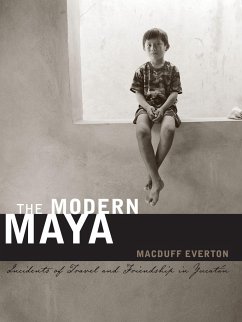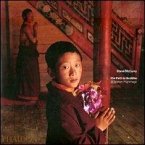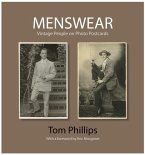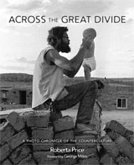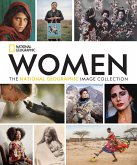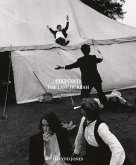- Gebundenes Buch
- Merkliste
- Auf die Merkliste
- Bewerten Bewerten
- Teilen
- Produkt teilen
- Produkterinnerung
- Produkterinnerung
This magnificent ethnographic photo-essay presents the modern Maya of Yucatán whöresilient, resourceful, creative, and armed with intimate knowledge of the place where they live¿have survived centuries of upheaval
Andere Kunden interessierten sich auch für
![The Path to Buddha The Path to Buddha]() Robert ThurmanThe Path to Buddha29,99 €
Robert ThurmanThe Path to Buddha29,99 €![Menswear Menswear]() Tom PhillipsMenswear16,99 €
Tom PhillipsMenswear16,99 €![Fantasy Travel Fantasy Travel]() Tom PhillipsFantasy Travel16,99 €
Tom PhillipsFantasy Travel16,99 €![Across the Great Divide Across the Great Divide]() Roberta PriceAcross the Great Divide24,99 €
Roberta PriceAcross the Great Divide24,99 €![Women: The National Geographic Image Collection Women: The National Geographic Image Collection]() National GeographicWomen: The National Geographic Image Collection24,99 €
National GeographicWomen: The National Geographic Image Collection24,99 €![Oxford: The Last Hurrah Oxford: The Last Hurrah]() Dafydd JonesOxford: The Last Hurrah31,99 €
Dafydd JonesOxford: The Last Hurrah31,99 €![All Tore Up All Tore Up]() George BrainardAll Tore Up49,99 €
George BrainardAll Tore Up49,99 €-
-
This magnificent ethnographic photo-essay presents the modern Maya of Yucatán whöresilient, resourceful, creative, and armed with intimate knowledge of the place where they live¿have survived centuries of upheaval
Hinweis: Dieser Artikel kann nur an eine deutsche Lieferadresse ausgeliefert werden.
Hinweis: Dieser Artikel kann nur an eine deutsche Lieferadresse ausgeliefert werden.
Produktdetails
- Produktdetails
- Verlag: UNIV OF TEXAS PR
- Seitenzahl: 368
- Erscheinungstermin: 1. März 2012
- Englisch
- Abmessung: 317mm x 245mm x 35mm
- Gewicht: 2209g
- ISBN-13: 9780292726932
- ISBN-10: 0292726937
- Artikelnr.: 35055460
- Herstellerkennzeichnung
- Libri GmbH
- Europaallee 1
- 36244 Bad Hersfeld
- 06621 890
- Verlag: UNIV OF TEXAS PR
- Seitenzahl: 368
- Erscheinungstermin: 1. März 2012
- Englisch
- Abmessung: 317mm x 245mm x 35mm
- Gewicht: 2209g
- ISBN-13: 9780292726932
- ISBN-10: 0292726937
- Artikelnr.: 35055460
- Herstellerkennzeichnung
- Libri GmbH
- Europaallee 1
- 36244 Bad Hersfeld
- 06621 890
* Foreword: Macduff Everton’s Yucatán by Carter Wilson
* Acknowledgments
* A Short History and the Legacy of the Maya Forest: An account of the
ancient Maya and the collapse, or perhaps the slow crumble; in the
field with archaeologists Anabel Ford and Scott Fedick, who find
evidence that there wasn’t an environmental catastrophe, and the
legacy of the Maya Forest, a feral forest garden
* Introduction: An account of the modern Maya: incidents of travel and
friendship in Yucatán and how I met Charles Demangeat and Hilario
Hiler; this book project now extends over four decades and includes
important chapters in the lives of the Maya
* I. The Milpa: An account of Dario Tuz Caamal, a Maya farmer, and his
wife, Herculana Chi Pech; the Maya practice of growing vegetables,
herbs, fruits, and hardwoods at their farm and home garden and
agricultural traditions and ceremonies thousands of years old
* II. The Milpa and Cancún: The continuing account of Dario Tuz Caamal
and Herculana Chi Pech: his release from prison and finding work in
Cancún; the immediate effects of NAFTA on the subsistence farmer in
Mexico and the rising rate of depression and suicide in Yucatán
* III. Chicleros: A Season in the Jungle: An account of Diego Jiménez
Chi and Cornelio Castro Salazar, chicleros, who lived in the jungle
along with their wives and children during the rainy season to bleed
the chicozapote tree for the resin used to make chewing gum, and what
happened when gum manufacturers supplanted the resin with petroleum
products
* IV. Doña Veva and Alicia: Two Generations of Women: An account of
Genoveva Martín Kumul and her daughter Alicia and how Alicia grew
from a girl in a jungle chiclero camp to becoming a bilingual
teacher, as well as her marriage and children, and the effects of the
Evangelical movement in Maya towns
* V. Xocen: The Saintly Cross of the Center of the Earth: An account of
the miraculous Saintly Cross of the Center of the Earth, the Caste
War of Yucatán, and the Santa Cruz Maya; we attend religious
celebrations in Xocen, talk with a Maya priest, and visit our friend
Celso Dzib Ay and his wife, María Equilia May Tun
* VI. The Santa Cruz Maya: An account of how Pablo Canche Balam and
Marcelino Poot Ek introduced us to the sacred villages, talking
crosses, fiestas, and celebrations of the Santa Cruz Maya; we witness
the onslaught of development and tourism in their traditional lands
and find a Talking Cross
* VII. Cowboys: Corn to Cattle to Corn: An account of Eleuterio Noh
Ceh, a corn farmer who became a cowboy and then returned to corn
farming, whose children abandoned farming to find work in
maquiladoras, making Maidenform bras and Jordache jeans, until the
manufacturers found cheaper labor elsewhere
* VIII. Henequen: The Dangers of a Monoculture: An account of Jesús
López Martínez, a henequen worker, and the henequen industry, which
failed to remain competitive in a world economy, and the consequences
of a monocrop
* Epilogue
* Glossary
* Suggested Reading
* Index
* Acknowledgments
* A Short History and the Legacy of the Maya Forest: An account of the
ancient Maya and the collapse, or perhaps the slow crumble; in the
field with archaeologists Anabel Ford and Scott Fedick, who find
evidence that there wasn’t an environmental catastrophe, and the
legacy of the Maya Forest, a feral forest garden
* Introduction: An account of the modern Maya: incidents of travel and
friendship in Yucatán and how I met Charles Demangeat and Hilario
Hiler; this book project now extends over four decades and includes
important chapters in the lives of the Maya
* I. The Milpa: An account of Dario Tuz Caamal, a Maya farmer, and his
wife, Herculana Chi Pech; the Maya practice of growing vegetables,
herbs, fruits, and hardwoods at their farm and home garden and
agricultural traditions and ceremonies thousands of years old
* II. The Milpa and Cancún: The continuing account of Dario Tuz Caamal
and Herculana Chi Pech: his release from prison and finding work in
Cancún; the immediate effects of NAFTA on the subsistence farmer in
Mexico and the rising rate of depression and suicide in Yucatán
* III. Chicleros: A Season in the Jungle: An account of Diego Jiménez
Chi and Cornelio Castro Salazar, chicleros, who lived in the jungle
along with their wives and children during the rainy season to bleed
the chicozapote tree for the resin used to make chewing gum, and what
happened when gum manufacturers supplanted the resin with petroleum
products
* IV. Doña Veva and Alicia: Two Generations of Women: An account of
Genoveva Martín Kumul and her daughter Alicia and how Alicia grew
from a girl in a jungle chiclero camp to becoming a bilingual
teacher, as well as her marriage and children, and the effects of the
Evangelical movement in Maya towns
* V. Xocen: The Saintly Cross of the Center of the Earth: An account of
the miraculous Saintly Cross of the Center of the Earth, the Caste
War of Yucatán, and the Santa Cruz Maya; we attend religious
celebrations in Xocen, talk with a Maya priest, and visit our friend
Celso Dzib Ay and his wife, María Equilia May Tun
* VI. The Santa Cruz Maya: An account of how Pablo Canche Balam and
Marcelino Poot Ek introduced us to the sacred villages, talking
crosses, fiestas, and celebrations of the Santa Cruz Maya; we witness
the onslaught of development and tourism in their traditional lands
and find a Talking Cross
* VII. Cowboys: Corn to Cattle to Corn: An account of Eleuterio Noh
Ceh, a corn farmer who became a cowboy and then returned to corn
farming, whose children abandoned farming to find work in
maquiladoras, making Maidenform bras and Jordache jeans, until the
manufacturers found cheaper labor elsewhere
* VIII. Henequen: The Dangers of a Monoculture: An account of Jesús
López Martínez, a henequen worker, and the henequen industry, which
failed to remain competitive in a world economy, and the consequences
of a monocrop
* Epilogue
* Glossary
* Suggested Reading
* Index
* Foreword: Macduff Everton’s Yucatán by Carter Wilson
* Acknowledgments
* A Short History and the Legacy of the Maya Forest: An account of the
ancient Maya and the collapse, or perhaps the slow crumble; in the
field with archaeologists Anabel Ford and Scott Fedick, who find
evidence that there wasn’t an environmental catastrophe, and the
legacy of the Maya Forest, a feral forest garden
* Introduction: An account of the modern Maya: incidents of travel and
friendship in Yucatán and how I met Charles Demangeat and Hilario
Hiler; this book project now extends over four decades and includes
important chapters in the lives of the Maya
* I. The Milpa: An account of Dario Tuz Caamal, a Maya farmer, and his
wife, Herculana Chi Pech; the Maya practice of growing vegetables,
herbs, fruits, and hardwoods at their farm and home garden and
agricultural traditions and ceremonies thousands of years old
* II. The Milpa and Cancún: The continuing account of Dario Tuz Caamal
and Herculana Chi Pech: his release from prison and finding work in
Cancún; the immediate effects of NAFTA on the subsistence farmer in
Mexico and the rising rate of depression and suicide in Yucatán
* III. Chicleros: A Season in the Jungle: An account of Diego Jiménez
Chi and Cornelio Castro Salazar, chicleros, who lived in the jungle
along with their wives and children during the rainy season to bleed
the chicozapote tree for the resin used to make chewing gum, and what
happened when gum manufacturers supplanted the resin with petroleum
products
* IV. Doña Veva and Alicia: Two Generations of Women: An account of
Genoveva Martín Kumul and her daughter Alicia and how Alicia grew
from a girl in a jungle chiclero camp to becoming a bilingual
teacher, as well as her marriage and children, and the effects of the
Evangelical movement in Maya towns
* V. Xocen: The Saintly Cross of the Center of the Earth: An account of
the miraculous Saintly Cross of the Center of the Earth, the Caste
War of Yucatán, and the Santa Cruz Maya; we attend religious
celebrations in Xocen, talk with a Maya priest, and visit our friend
Celso Dzib Ay and his wife, María Equilia May Tun
* VI. The Santa Cruz Maya: An account of how Pablo Canche Balam and
Marcelino Poot Ek introduced us to the sacred villages, talking
crosses, fiestas, and celebrations of the Santa Cruz Maya; we witness
the onslaught of development and tourism in their traditional lands
and find a Talking Cross
* VII. Cowboys: Corn to Cattle to Corn: An account of Eleuterio Noh
Ceh, a corn farmer who became a cowboy and then returned to corn
farming, whose children abandoned farming to find work in
maquiladoras, making Maidenform bras and Jordache jeans, until the
manufacturers found cheaper labor elsewhere
* VIII. Henequen: The Dangers of a Monoculture: An account of Jesús
López Martínez, a henequen worker, and the henequen industry, which
failed to remain competitive in a world economy, and the consequences
of a monocrop
* Epilogue
* Glossary
* Suggested Reading
* Index
* Acknowledgments
* A Short History and the Legacy of the Maya Forest: An account of the
ancient Maya and the collapse, or perhaps the slow crumble; in the
field with archaeologists Anabel Ford and Scott Fedick, who find
evidence that there wasn’t an environmental catastrophe, and the
legacy of the Maya Forest, a feral forest garden
* Introduction: An account of the modern Maya: incidents of travel and
friendship in Yucatán and how I met Charles Demangeat and Hilario
Hiler; this book project now extends over four decades and includes
important chapters in the lives of the Maya
* I. The Milpa: An account of Dario Tuz Caamal, a Maya farmer, and his
wife, Herculana Chi Pech; the Maya practice of growing vegetables,
herbs, fruits, and hardwoods at their farm and home garden and
agricultural traditions and ceremonies thousands of years old
* II. The Milpa and Cancún: The continuing account of Dario Tuz Caamal
and Herculana Chi Pech: his release from prison and finding work in
Cancún; the immediate effects of NAFTA on the subsistence farmer in
Mexico and the rising rate of depression and suicide in Yucatán
* III. Chicleros: A Season in the Jungle: An account of Diego Jiménez
Chi and Cornelio Castro Salazar, chicleros, who lived in the jungle
along with their wives and children during the rainy season to bleed
the chicozapote tree for the resin used to make chewing gum, and what
happened when gum manufacturers supplanted the resin with petroleum
products
* IV. Doña Veva and Alicia: Two Generations of Women: An account of
Genoveva Martín Kumul and her daughter Alicia and how Alicia grew
from a girl in a jungle chiclero camp to becoming a bilingual
teacher, as well as her marriage and children, and the effects of the
Evangelical movement in Maya towns
* V. Xocen: The Saintly Cross of the Center of the Earth: An account of
the miraculous Saintly Cross of the Center of the Earth, the Caste
War of Yucatán, and the Santa Cruz Maya; we attend religious
celebrations in Xocen, talk with a Maya priest, and visit our friend
Celso Dzib Ay and his wife, María Equilia May Tun
* VI. The Santa Cruz Maya: An account of how Pablo Canche Balam and
Marcelino Poot Ek introduced us to the sacred villages, talking
crosses, fiestas, and celebrations of the Santa Cruz Maya; we witness
the onslaught of development and tourism in their traditional lands
and find a Talking Cross
* VII. Cowboys: Corn to Cattle to Corn: An account of Eleuterio Noh
Ceh, a corn farmer who became a cowboy and then returned to corn
farming, whose children abandoned farming to find work in
maquiladoras, making Maidenform bras and Jordache jeans, until the
manufacturers found cheaper labor elsewhere
* VIII. Henequen: The Dangers of a Monoculture: An account of Jesús
López Martínez, a henequen worker, and the henequen industry, which
failed to remain competitive in a world economy, and the consequences
of a monocrop
* Epilogue
* Glossary
* Suggested Reading
* Index

